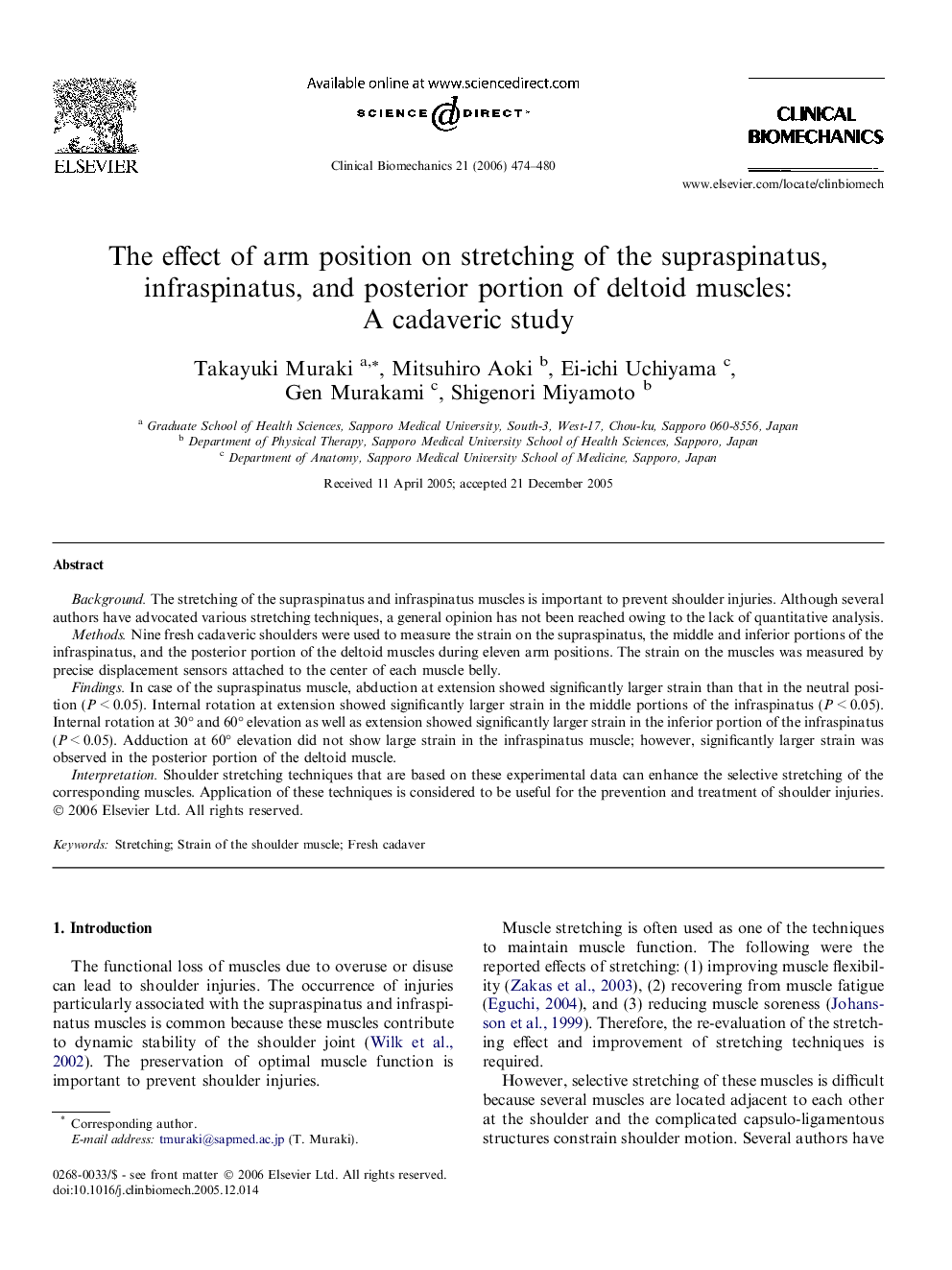| Article ID | Journal | Published Year | Pages | File Type |
|---|---|---|---|---|
| 4051742 | Clinical Biomechanics | 2006 | 7 Pages |
Background. The stretching of the supraspinatus and infraspinatus muscles is important to prevent shoulder injuries. Although several authors have advocated various stretching techniques, a general opinion has not been reached owing to the lack of quantitative analysis.Methods. Nine fresh cadaveric shoulders were used to measure the strain on the supraspinatus, the middle and inferior portions of the infraspinatus, and the posterior portion of the deltoid muscles during eleven arm positions. The strain on the muscles was measured by precise displacement sensors attached to the center of each muscle belly.Findings. In case of the supraspinatus muscle, abduction at extension showed significantly larger strain than that in the neutral position (P < 0.05). Internal rotation at extension showed significantly larger strain in the middle portions of the infraspinatus (P < 0.05). Internal rotation at 30° and 60° elevation as well as extension showed significantly larger strain in the inferior portion of the infraspinatus (P < 0.05). Adduction at 60° elevation did not show large strain in the infraspinatus muscle; however, significantly larger strain was observed in the posterior portion of the deltoid muscle.Interpretation. Shoulder stretching techniques that are based on these experimental data can enhance the selective stretching of the corresponding muscles. Application of these techniques is considered to be useful for the prevention and treatment of shoulder injuries.
